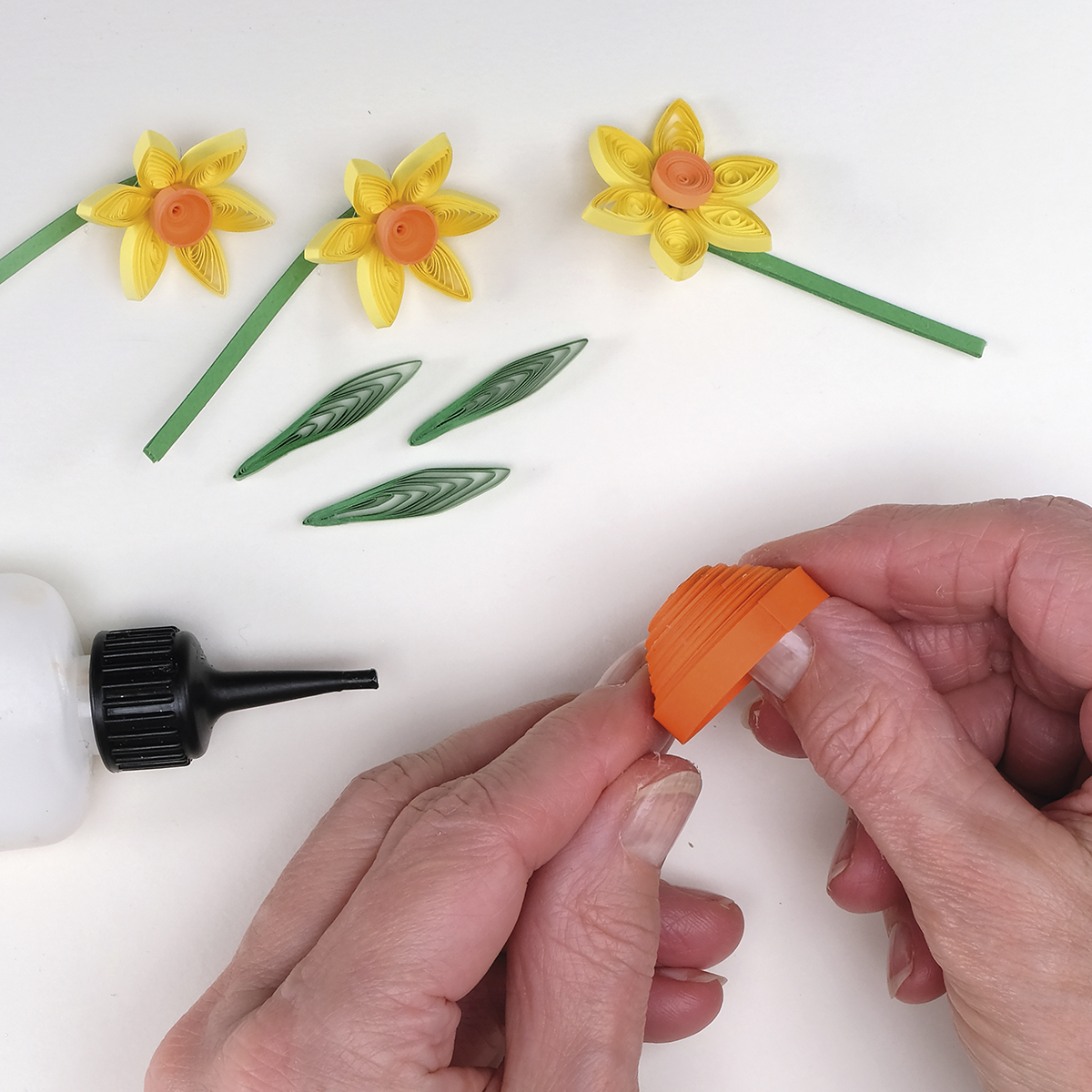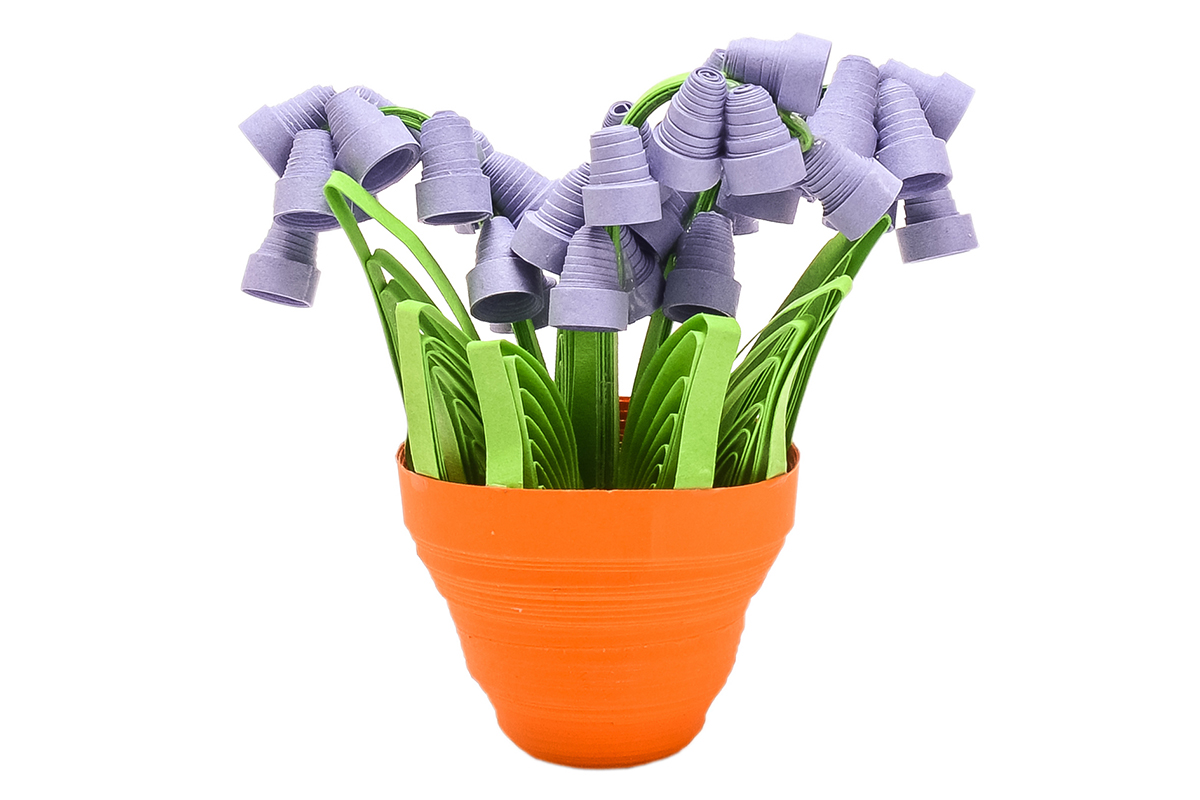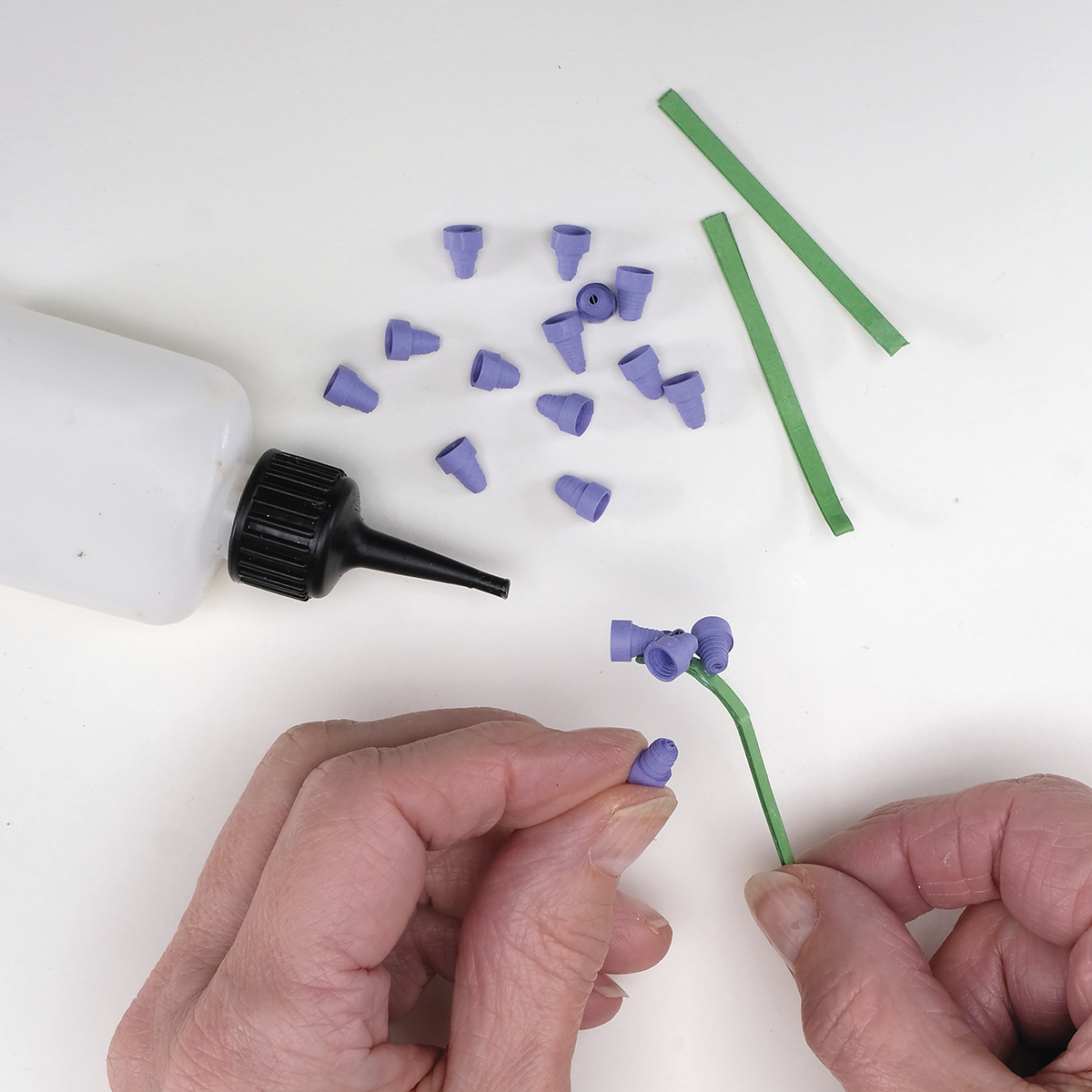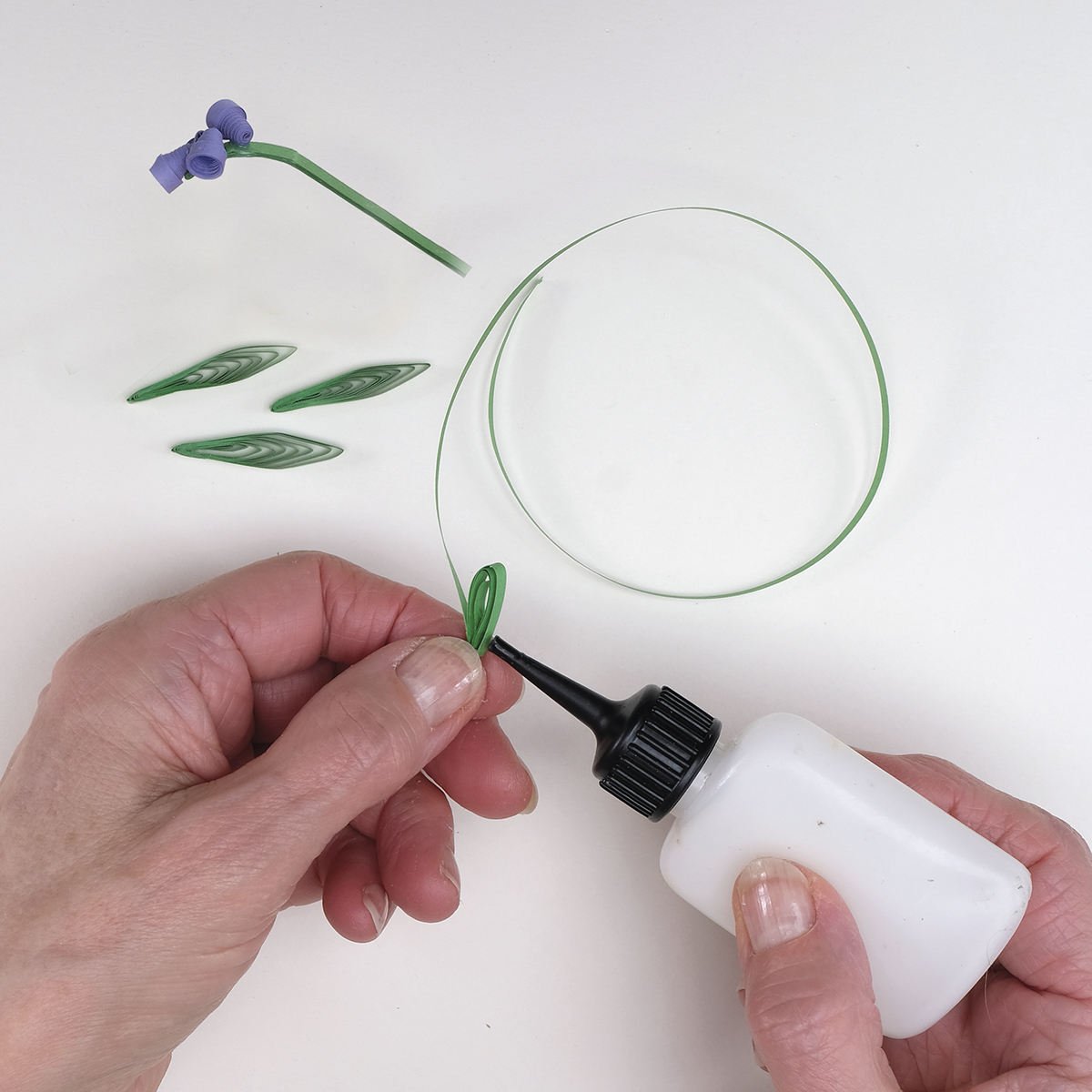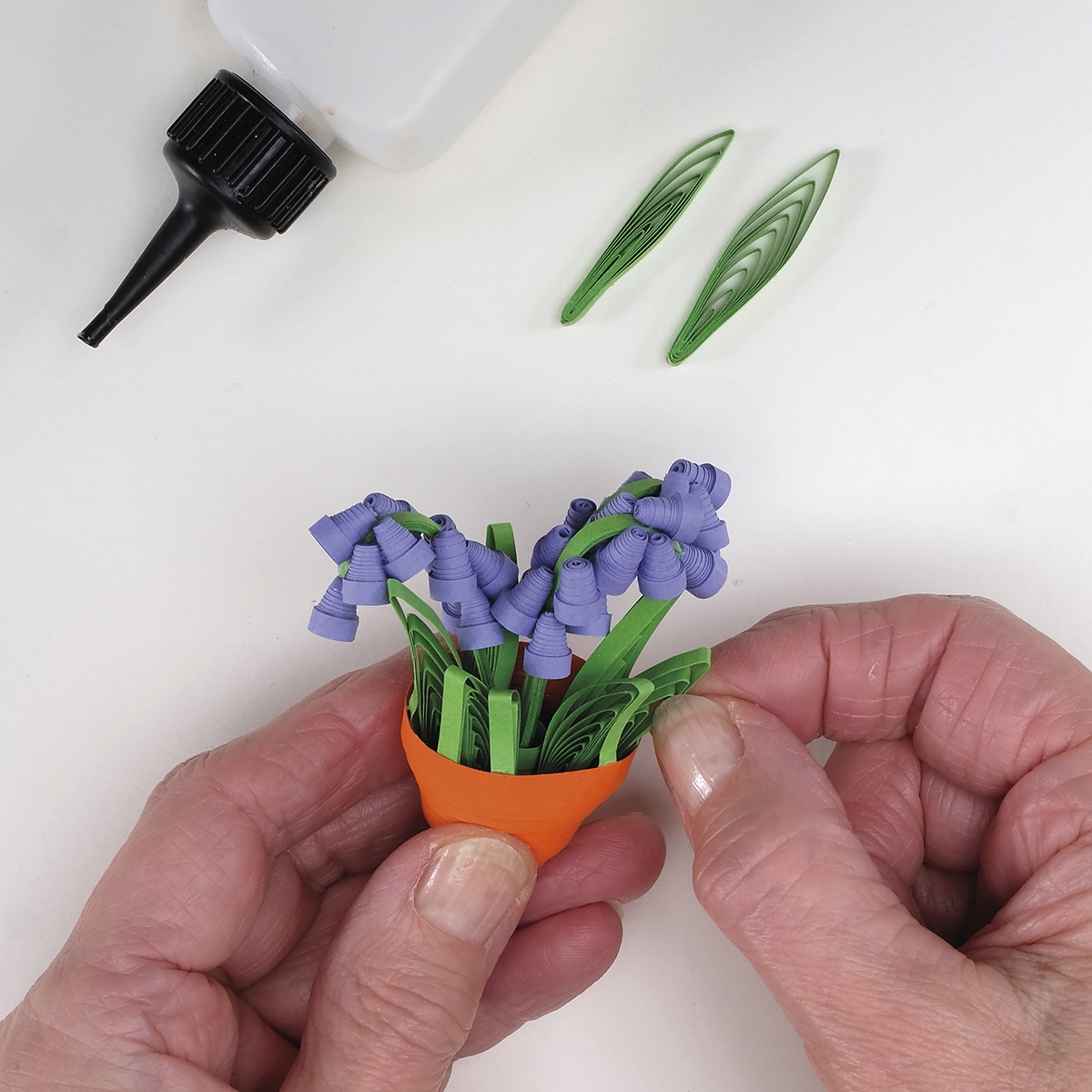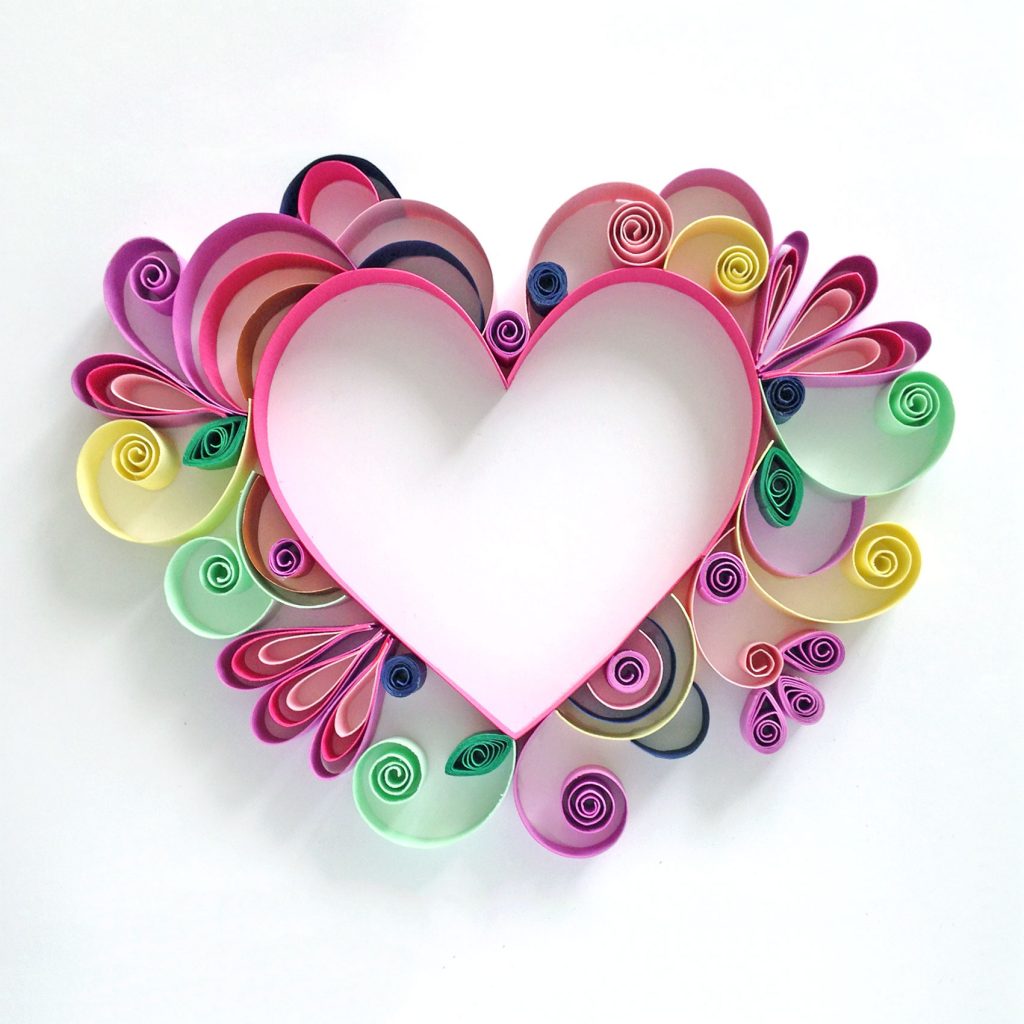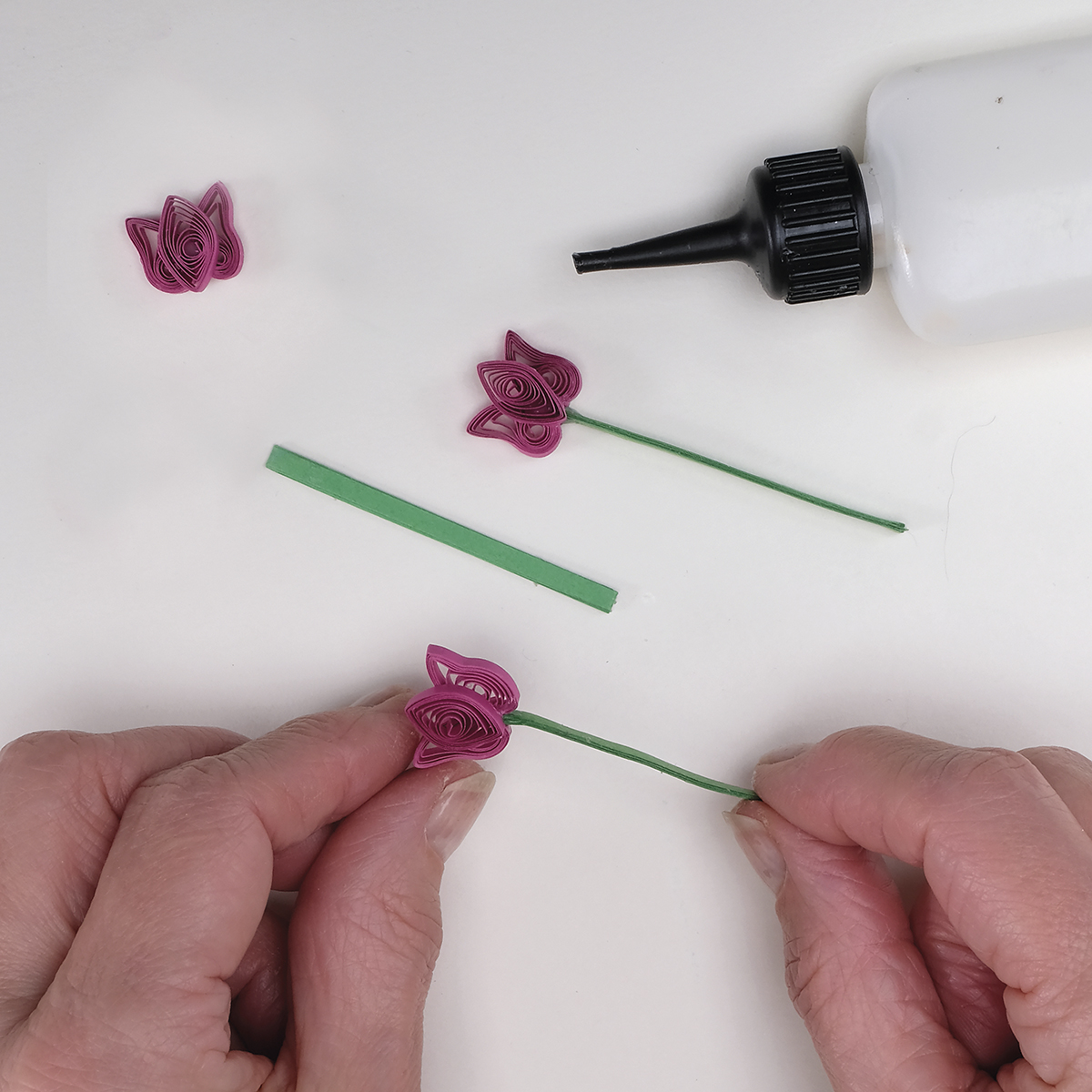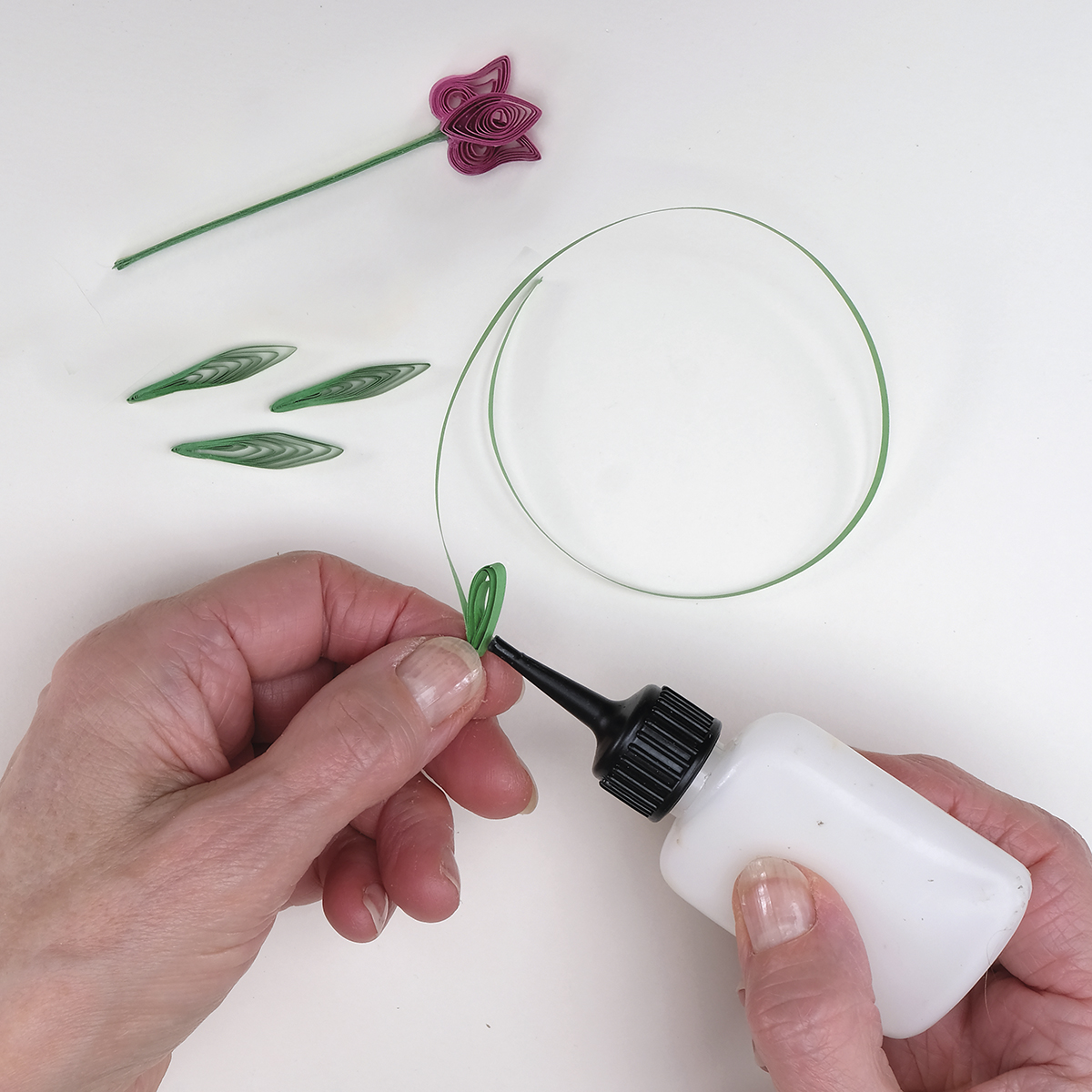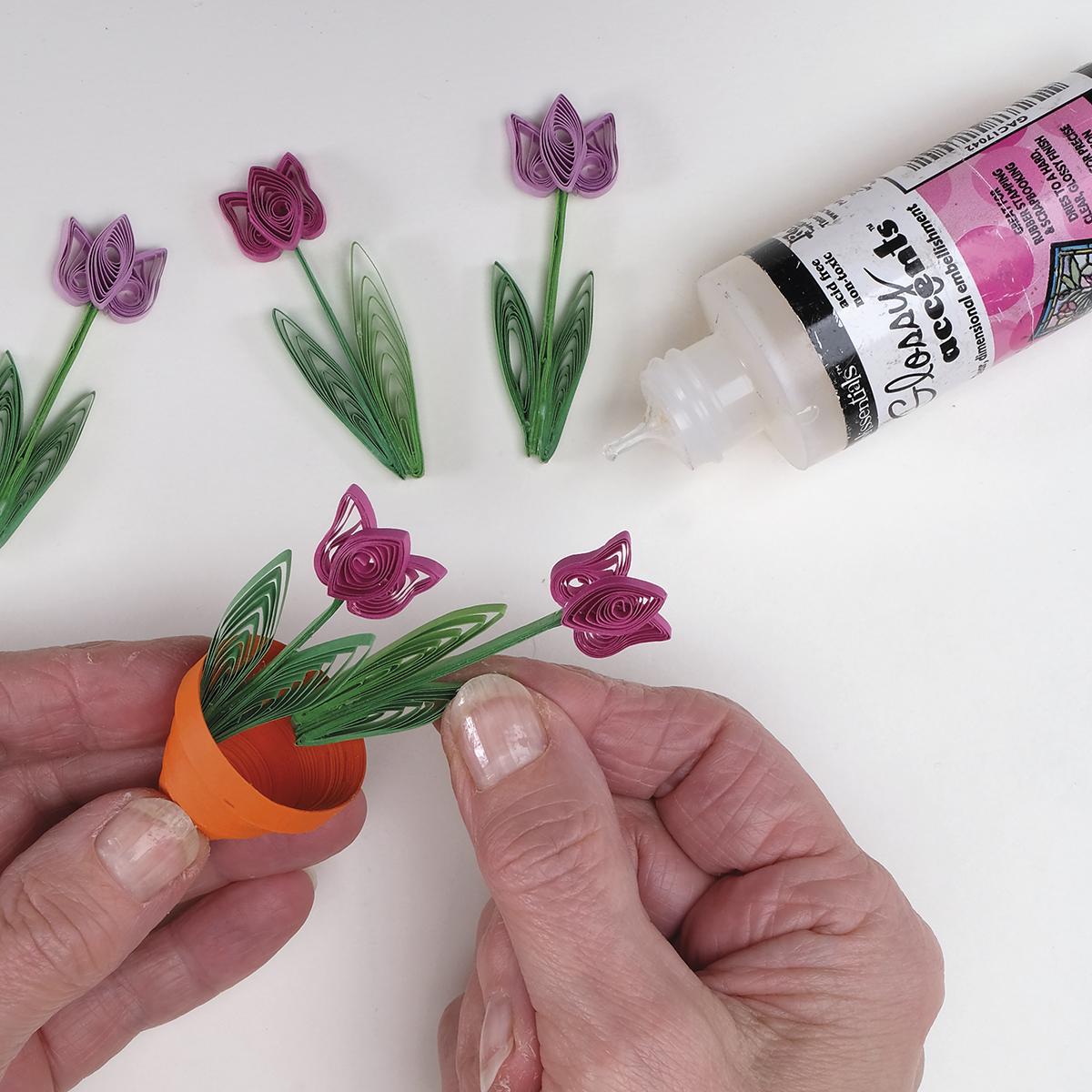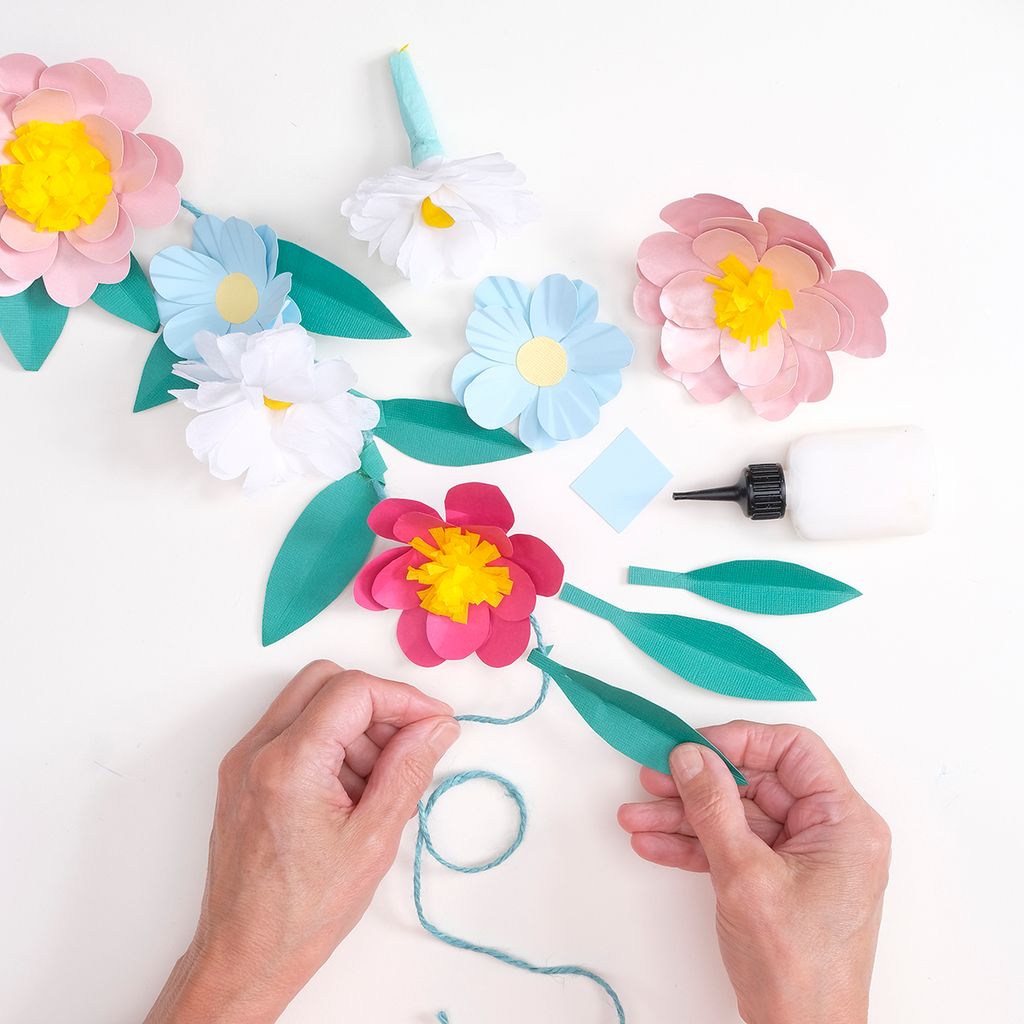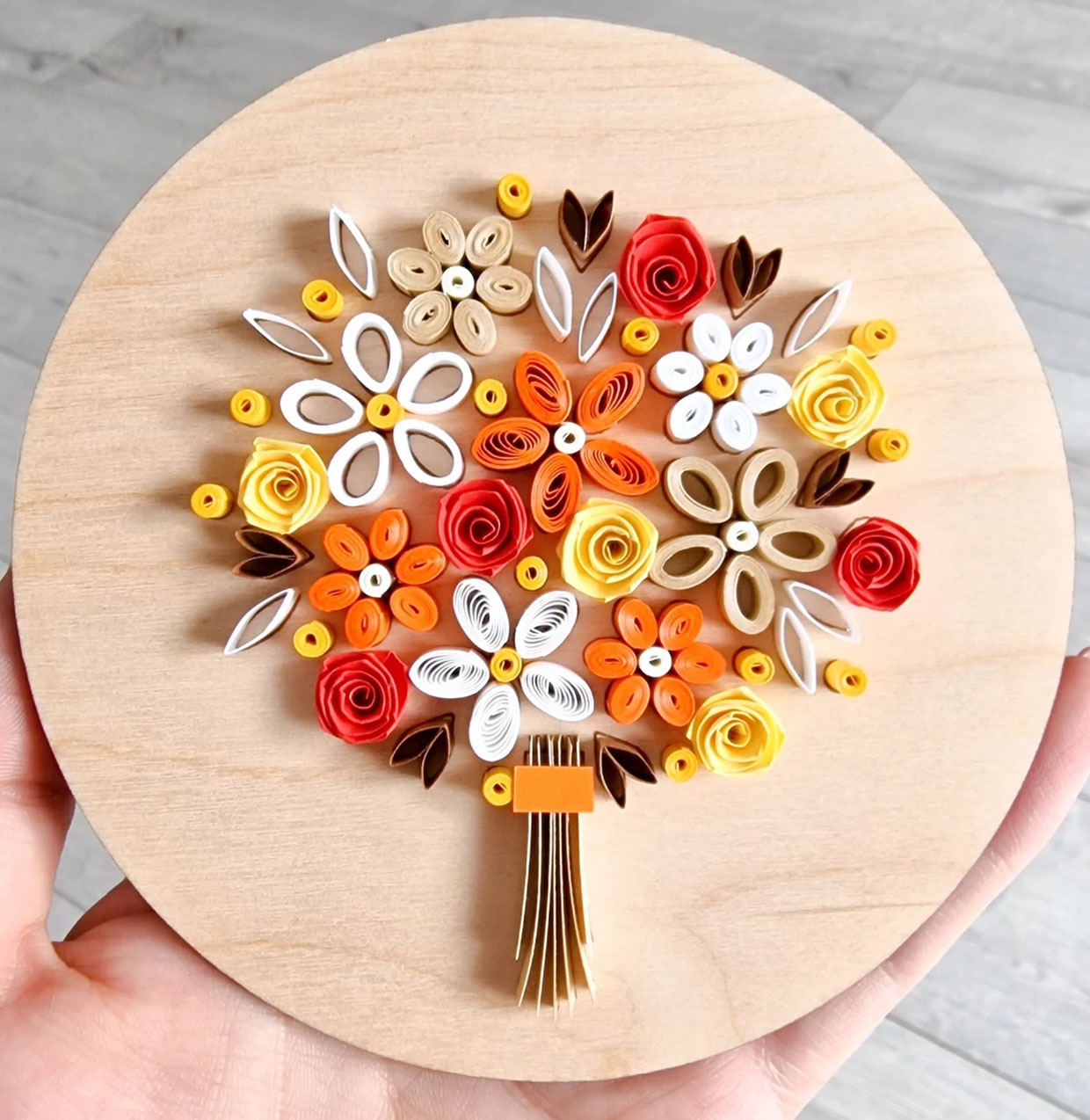Quilling is one of the most creative and ancient papercraft techniques around. It uses thin strips of paper rolled into coils, shapes and scrolls, and you use a quilling tool to create different designs.
If you’ve already tried some 2D quilling and learned to make some of the basic shapes, why not venture into the world of 3D quilling?
One of the most common shapes used in 3D quilling is the cup coil – a solid coil made up of several strips of paper where the centre is gently pushed inwards to create a dome effect. These shapes must be supported with a coating of PVA glue on the inside to prevent collapse.
The cup coil was used here on a larger scale to make the flowerpots and on a smaller scale to make the bell shape of the bluebells.
Most 3D quilling projects tend to be miniature and while these flowers are small they will sit neatly on a desk or shelf and last much longer than real flowers. They’ll make the perfect mini gift for someone who is starting a new job or moving to a new house!
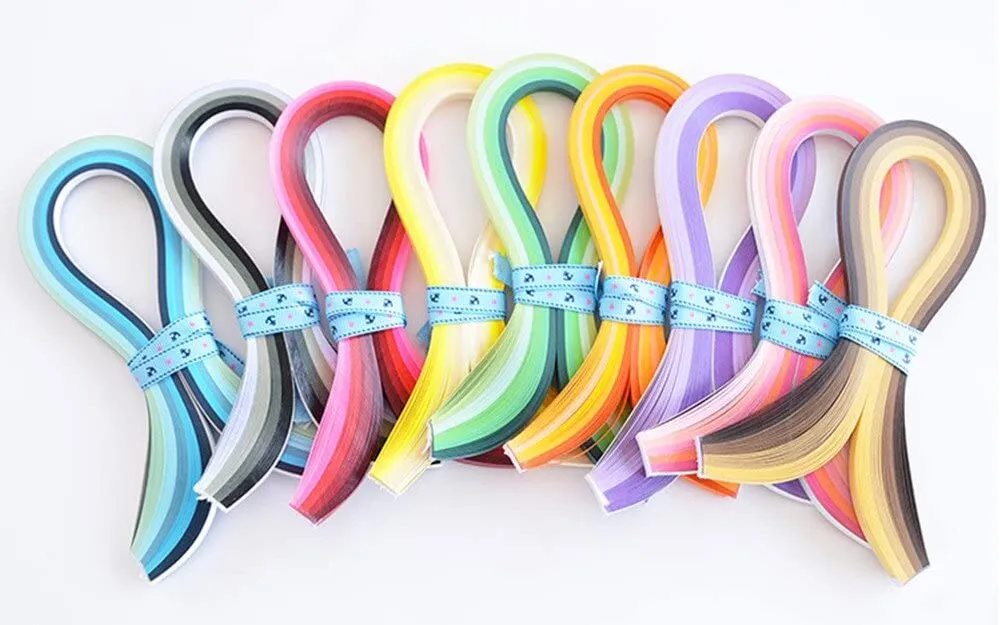
Top tips from designer Clare Buswell:
- Making the flowerpot can be tricky. Don’t use strips narrower than 5mm wide or the pot will collapse. Roll the solid coil tightly and, once glued, remove very carefully from the quilling tool. Make sure the base of your pot is fairly flat so it will stand. Use a small old artist’s paintbrush to apply the PVA glue to the inside of the flower pot. Leave the flowerpot to dry completely.
- Rather than leaving it flat, give your daffodil a more natural curved shape by placing it in the bottom of an egg cup when gluing it together, this will create a domed or curved effect. Leave to dry.
- Instead of cutting your own 5mm strips for the pots you can purchase ready-cut 5mm strips, which will speed up the process.
- If you are new to 3D quilling, start with the easiest of the flowers, the tulips. They will also work just as nicely on a card, if you’d like to make a matching set. The daffodils are also fairly easy to make whereas the bluebells are more difficult and will require more patience.
- Drying time is necessary for each section. The pots will collapse if they are not coated with PVA. Leave flowers to dry before adding the foliage. Even adding the flowers to the pots will require gluing a section at a time. With the bluebells in particular, it’s necessary to glue just a couple of bells at a time to the stem. Use a good quality tacky glue when it comes to gluing the quilled segments together.
- If your flower stems aren’t long enough for your pot or you’d like to add more height, simply add a solid coil inside the pot first which will add height to the flowers.
How to make quilled flowers: Daffodils




